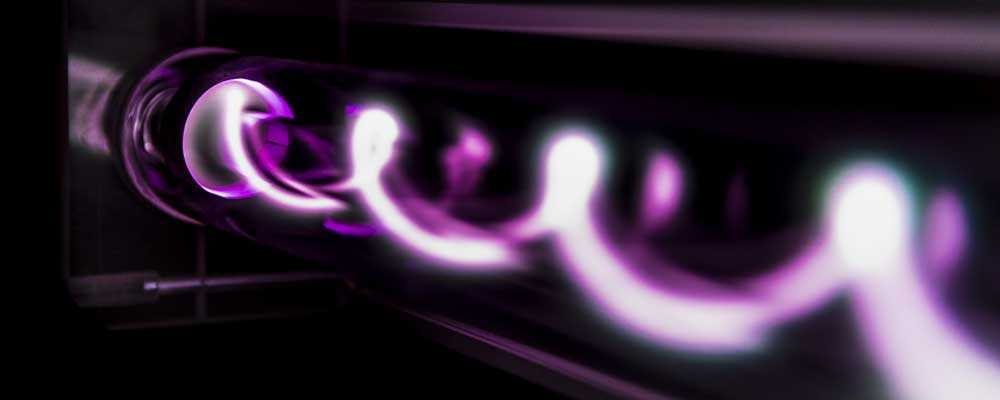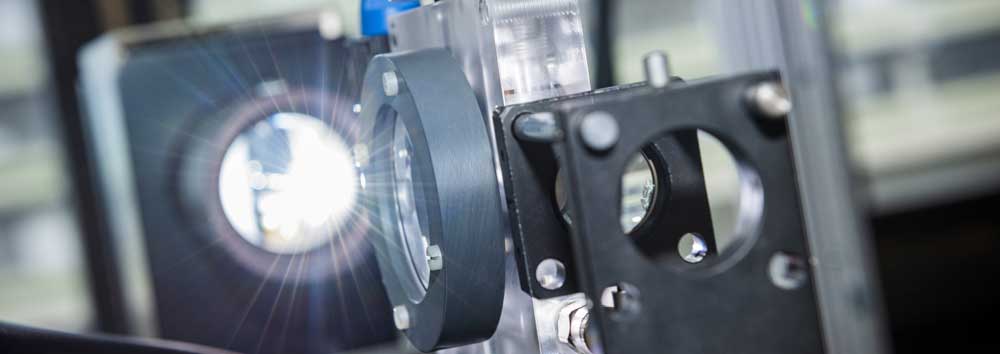A7 - sDBDSchlierenSchlieren imaging of the start phase of plasma-induced fluid flow in a |
- Details
Internationalization
CRC 1316 at the International Conference on Plasma Medicine
In the summer, Dr. Sebastian Burhenn and Steffen Schüttler, together with Sabrina Klopsch and Tim Dirks from the RUB Applied Microbiology group, visited the 9th International Conference on Plasma Medicine (ICPM9) in Utrecht, the Netherlands. Around 250 participants discussed the current state of plasmas in medicine. Topics ranged from "Plasma Agricultural Applications" to "Plasma-Liquid Interactions" to "Plasma-Based Decontamination and sterilisation" and much more.
Sebastian Burhenn gave a presentation in the section "Fundamentals of Atmospheric Plasma" on the "Influence of Humidity on OH Distribution in the COST Jet measured by Laser-Induced Fluorescence". Steffen Schüttler contributed to the section "Plasma-Liquid Interactions" with his talk on "Hydrogen peroxide production in water treated with a capillary plasma jet". Sabrina Klopsch and Tim Dirks presented a poster about their work in the field of plasma-driven biocatalysis.
- Details
Internationalization
CRC 1316 members on the ICPM9
Four research members of the CRC 1316 join the 9th International Conference on Plasma Medicine (ICPM9). Today, Sebastian Burhenn talked about the 'Impact of humidity on the OH distribution in the effluent of the COST-Jet measures by laser induced fluorescence'. Another highlight is the plenary talk of the CRC PI Julia Bandow on 'Plasma-driven biocatalysis: challenges and opportunities'.
- Details
Interantionalization
ICOPS conference in Seattle

The 49th International Conference on Plasma Science (ICOPS) was held in Seattle from May 22 through May 26. It was one of the first conferences since the beginning of the COVID pandemic situation that was organized as a hybrid conference and partly held on site. It was nice to be back at a live conference getting in touch face to face with other researchers. More than 350 on site attendees visited the conference and more than 150 researchers joined the conference virtually. The conference venue was the Sheraton Grand Seattle located in Seattle Downtown. The scientific program reached out to wide varieties in the field of plasma physics covering topics such as basic phenomena in high temperature fusion plasmas or low temperature plasma jets up to the applications of different sources as for example in medicine, agriculture or for environmental purposes.
Beside the scientific program there were lots of things to discover around the area such as strolling at the famous Pike Place Market or going up the Space Needle to get a great view over the city and the 4392m high volcano Mount Rainier, if it does not hide itself in dense clouds. During the conference a spontaneous group event took place, exploring the night life of Seattle together with around 30 other researchers and the conference was eventually closed with a nice banquet.
Patrick Preissing, project B2
- Details
Teaching
Visit of CRC 1316 students at Avantes
 The participants of the lecture "Plasma Diagnostics" from this and previous semesters visited the company Avantes in Apeldoorn, NL on 3.6.22. The Dutch company is specialized in so called hand-held or USB spectrometers and related accessories. These spectrometers are popular for species identification but also for monitoring plasmas.
The participants of the lecture "Plasma Diagnostics" from this and previous semesters visited the company Avantes in Apeldoorn, NL on 3.6.22. The Dutch company is specialized in so called hand-held or USB spectrometers and related accessories. These spectrometers are popular for species identification but also for monitoring plasmas.
During the from the Faculty of Physics and Astronomy supported excursion, insights into the production and new developments were given in addition to further application possibilities. In two small workshops, current plasma-relevant diagnostics could be used live, namely Raman spectroscopy and laser-induced breakdown spectroscopy (LIPS), which directly closed the circle to the lecture.
Students from the Faculty of Physics and Astronomy who are writing their theses as part of CRC 1316 participated in the trip.
- Details
Research
Editors pick of a research paper of project B7 on experiment and modeling of in-liquid streamers
The paper: "Propagation of nanosecond plasmas in liquids—Streamer velocities and streamer lengths" Journal of Vacuum Science & Technology A 40, 043003 (2022); had been selected as editors pick.
- Details
Research Data Management
Exchange Research Data Management UA Ruhr & Oulu
Under the slogan "Mining of research data instead of coal" the UA Ruhr organized an international knowledge exchange on data management with researchers working as data stewards at the University of Oulu, Finland on 11th and 12th May. The event was hosted in the convention center of Ruhr University Bochum and by zoom.
The local structures supporting research data management at the UA Ruhr universities were presented and experiences on advice, training and data management plans, and discuss best practices were shared.
Furthermore, an exchange between the CRCs CRC 1280 and CRC 1316 as well as the partners from UA-Ruhr and the Finnish guests took place. Here researchers and data stewards as well as data experts from the consortia were brought together.
The event was a great success, as the structures on both sides differ, but the challenges of the individual actors in the field of data management are identical. Thus, many interesting experiences could be exchanged. Due to the success, a return visit to Oulu is now being planned to continue the exchange.
- Details
Research Data Management
Data Stewards from Finland visit RUB
An Erasmus program enables exchange among university staff. RUB welcomes guests from the University of Oulu.
RUB receives a visit from Finland. The Erasmus+ Staff Mobility Program enables visits of university staff to expand internationalization. From the UNIC partner university Oulu in Finland, researchers from different faculties are visiting RUB to exchange ideas on research data management.
On May 11, 2022, the so-called Data Stewards will be welcomed at an event hosted by RUB, the University of Duisburg Essen (UDE) and the Technical University (TU) Dortmund at the Event Center on campus. The Data Stewards are responsible for the Faculty of Education, Oulu Business School, Faculty of Humanities, Faculty of Technology and Faculty of Science and Biocenter Oulu.
The participating guests are Data Stewards from various collaborative projects, personnel from the libraries and central IT, and interested researchers from the three universities of the University Alliance Ruhr. In addition to the RUB, these include the UDE and TU Dortmund. On May 12, the program for the Finnish guests will also include one-on-one discussions and roundtable discussions in smaller groups. These include, for example, laboratory tours of the Collaborative Research Centers "Extinction Learning" (SFB 1280) and "Transient Atmospheric Pressure Plasmas - from Plasma to Liquids to Solids" (SFB 1316), a discussion round on the topic of Open Science and talks with the University Library, the WORLDFACTORY Start-up Center and the Materials Research Department.
adapted from Katrin Heyer, RUB
- Details
Awards
Faraday Medal for Beatriz Roldan
FHI Director Beatriz Roldán Cuenya will be awarded the prestigious Faraday Medal from the Royal Society of chemistry of UK for 2022. She will receive the medal at “Electrochem2022” in Edinburgh this September. In 1987, there was another prior winner from FHI, former director and world-wide electrochemistry leader, Prof. Heinz Gerischer.
- Details
Scientific Publications
Achim von Keudell new Editor in Chief for Plasma Processes and Polymers
Achim von Keudell became with the beginning of March one of the four Editors in Chief of Plasma Processes and Polymers.













